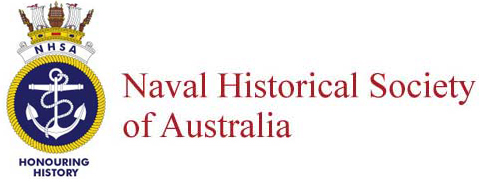- Author
- Rivett, Norman C
- Subjects
- History - general, Naval technology
- Tags
- None noted.
- RAN Ships
- None noted.
- Publication
- September 2004 edition of the Naval Historical Review (all rights reserved)
HELM ORDERS GIVEN in British ships prior to 1934 were relative to tiller movement irrespective of whether steering was by tiller or wheel.
The orders of the Officer of the watch (OOW) indicated the direction in which the tiller was to be moved or in which direction the wheel was to be turned, he interpreted which way the ship’s bow was to turn, the helmsman was simply required to move the tiller or turn the wheel in the direction ordered.
The movement of the tiller is opposite to that of the rudder and of the ship’s bow or head.
When the ships’ wheel was introduced into service circa 1703, both methods of steering were in use simultaneously and it was prudent to arrange the wheel mechanism to simulate the movement of a tiller to avoid confusion.
Helm orders were therefore identical for both tiller and wheel and remained so until after World War One when a number of maritime nations began to change the mechanism of ships’ wheels so that the direction of movement coincided with that of the rudder and the resulting movement of the ship’s bow.
British ships followed this trend in 1934, thereafter the OOW’s order indicated the direction in which the wheel was to be turned as previously but now this coincided with the direction in which the rudder and hence the ship’s bow moved.
With either arrangement the helmsman simply turned the wheel in the direction given in the OOW’s order, the change only affected the helm order given by the OOW.
The 1997 film Titanic correctly depicted the helm order given by Mr. Murdoch, the OOW, as ‘hard a’ starboard’. The correct response from a helmsman of that era (1912) should have been to turn the ship’s wheel to STARBOARD whilst repeating the OOW’s order and the ship’s head, or bow would have turned to PORT. Instead, the helmsman turned the ship’s wheel to PORT, without repeating the OOW’s order, and the ship’s bow also turned to PORT. For this to have occurred, the steering arrangement would have had to be in the post 1934 mode.
The film was also in error by portraying the helmsman, in reality a very experienced quartermaster, turning the ship’s wheel contrary to the direction given in the OOW’s order.
There were thus three errors in the scene, the implied use of a modern helm arrangement, the interpretation by the helmsman of the OOW’s intentions as to which way the ship’s head was required to turn and the helmsman’s failure to repeat the OOW’s order, a practice from time immemorial.
The fact that the original helm arrangement was more liable to misinterpretation when inexperienced personnel were involved is evidenced by the filmmaker’s confusion.
The change to the helm arrangement was a logical and long overdue revision for the tiller was no longer in general use except in the smallest of boats.
The change was in no way influenced by the Titanic disaster in which the helm arrangement played no part.
